Spading and digging forks can be used to prepare or improve the soil in your garden. You might be wondering which type of gardening fork will best fit your task. Don't worry because we have done the research to show you the difference between a spading and a digging fork.
Spading forks and digging forks are types of garden forks, and all three terms are used interchangeably. Both garden forks can be used to dig through or turn the soil.
The tines of a spading fork are curved like a spade, which allows for easier scooping. Digging forks are used for turning the soil in large areas. However, since the terms are often used interchangeably, there is no consistent difference between the two garden forks.
Spading and digging forks are garden tools used for planting or moving plants around your garden. Continue reading as we discuss what makes these forks similar and different.
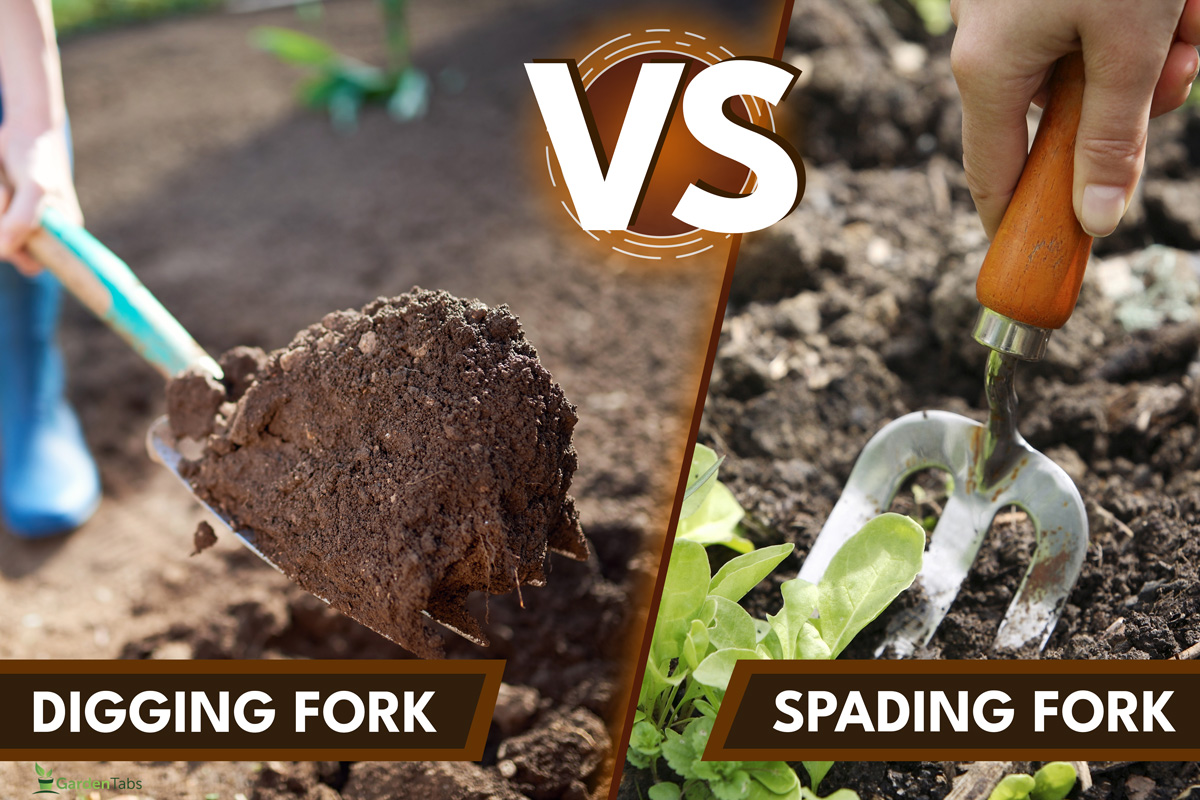
What Is The Difference Between A Spading Fork And A Digging Fork?
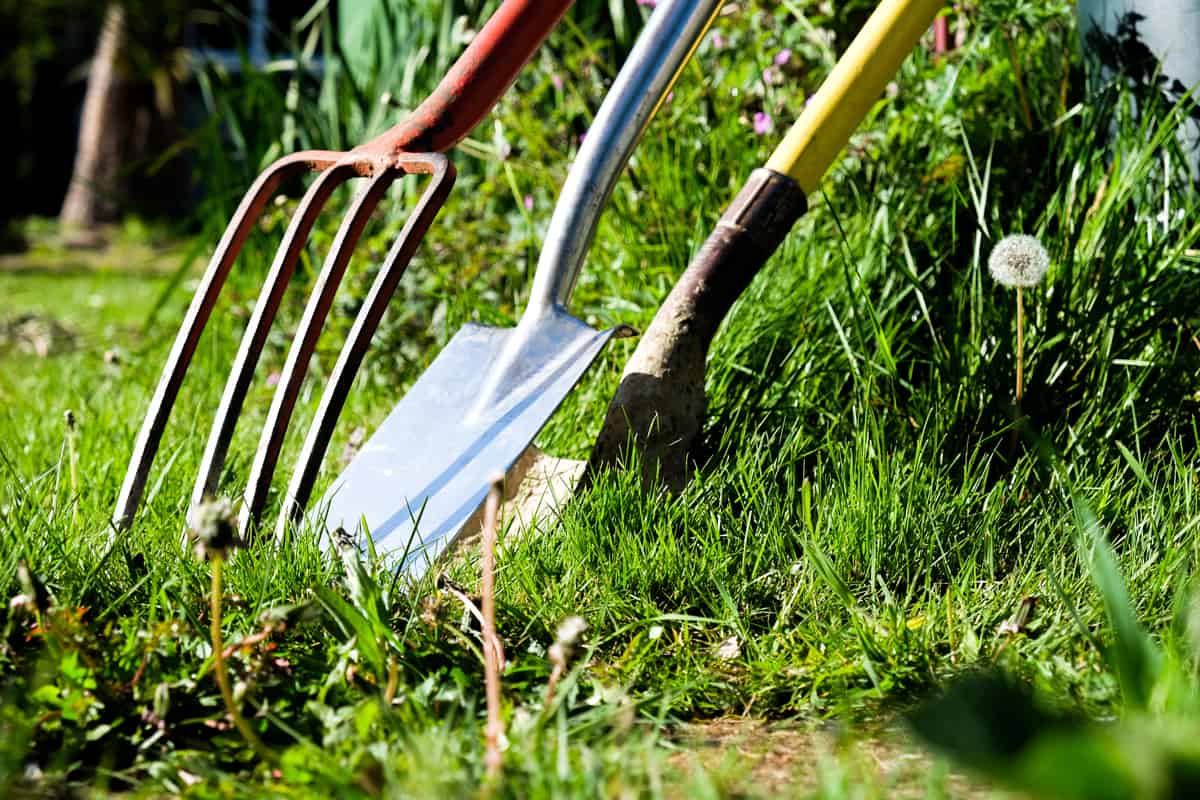
A spading fork and a digging fork are used for digging through or tilling the soil. There is no sharp distinction between them. Both are often referred to as the same gardening fork.
A gardening fork or garden fork is a tool made up of an elongated shaft that has a large fork head connected to one end of the rod. The fork is usually made of metal to provide a sturdy material that the gardener can use for moving the soil.
Unlike a pitchfork, which has sharp, thin tines that can scoop up large portions of loose material like hay, garden forks dig through tougher materials. They have thicker, sturdier tines that can lift soil from the ground.
When looking for a gardening fork, it is best to search for the features of the tool you need instead of referring to the product's name. The terms are so often used interchangeably that there is no consistent difference between the two forks.
Nowadays, a spading fork and a digging fork are two different names for the same tool.
What Is The Difference Between A Garden Fork And A Digging Fork?
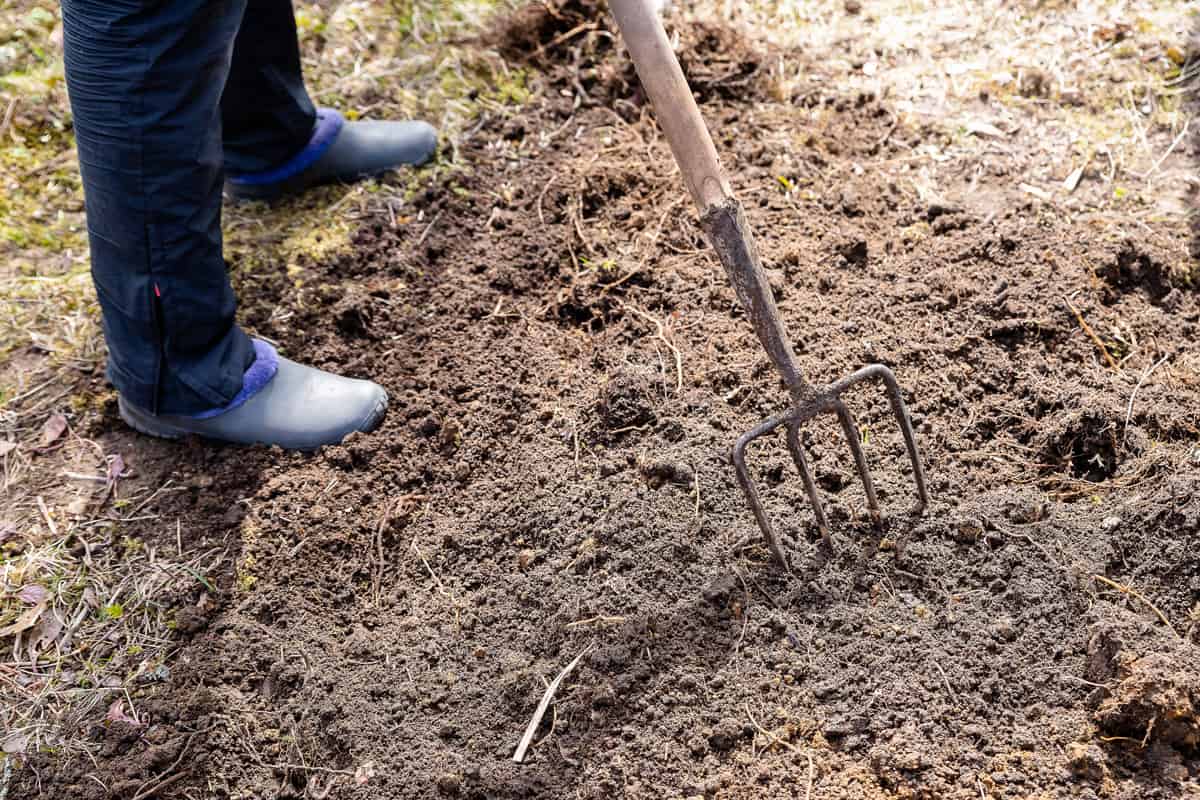
Garden forks and digging forks are commonly used to refer to the same type of gardening tool used for many tasks that involve soil. Gardening forks and digging forks can be used interchangeably.
There are many garden forks, and a digging fork is one of them. Therefore a digging fork is a garden fork, but not all garden forks are digging forks. A digging fork, also often referred to as a spading fork, is mainly used for digging soil.
Another type of garden fork is the border fork, which has a smaller forkhead and is much lighter than a digging fork due to its average-sized shaft. It is easier to use in the garden due to its lighter weight.
Click here to shop for a border fork on Amazon.
A compost fork is another garden fork that can incorporate organic compounds into the soil. However, it is not made for digging. While you can substitute a digging fork for a compost fork, you can't use a compost fork for digging.
Click here to shop for a compost fork on Amazon.
How Do I Use A Garden Fork?
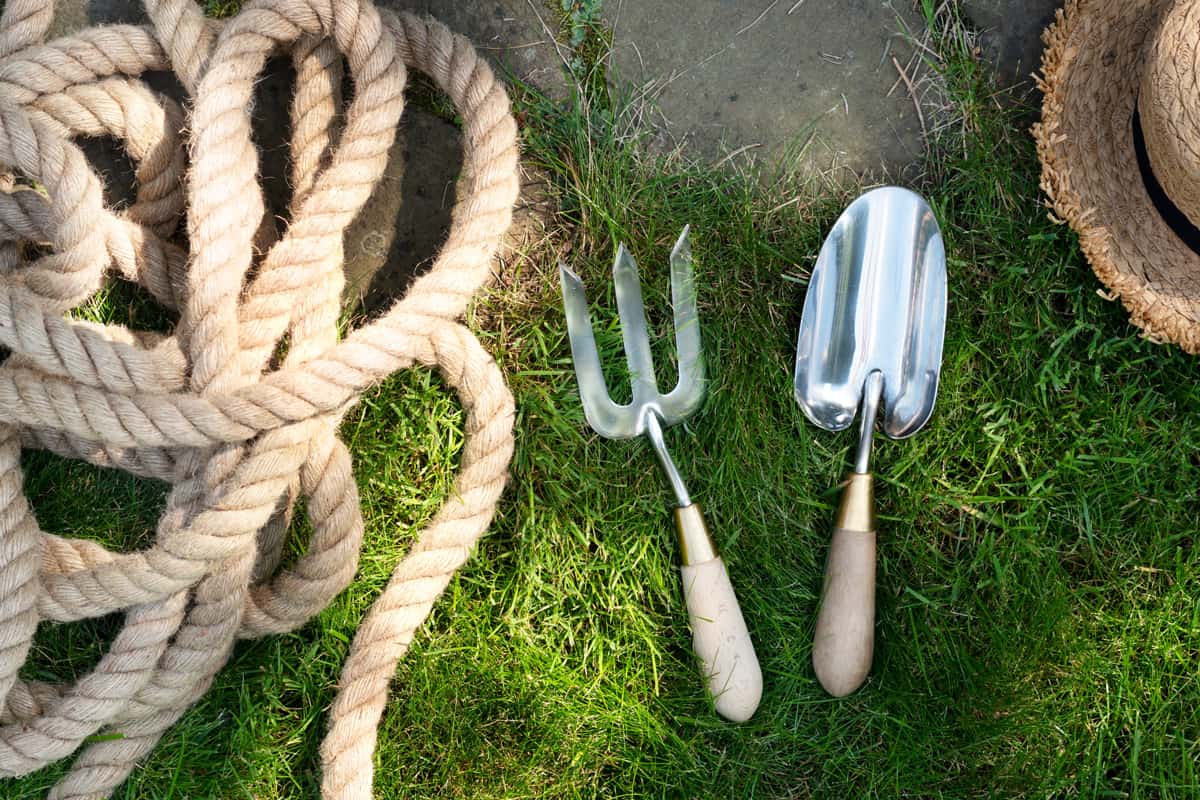
Garden forks can be used for multiple tasks that involve moving the soil. They can also provide more water and air to the plants. Below is a list of garden tasks:
Replanting
Garden forks can be used to dig up the perennials that you want to relocate. The sturdy tines of the fork can easily dig through rocky, sandy, or loamy soil.
The large gaps between each tine are also helpful for digging up perennials with stocky, fleshy roots. The tines are perfect for digging up a plant while reducing the chances of the garden tool stabbing the roots.
When the tines are buried and then moved, the soil becomes loose until the plant can be pulled out from the soil with its roots.
Perennials can have a lifespan of two years or more. When relocating them, it is important to keep the roots intact and uninjured so that the plant will not be susceptible to infection when it is transferred.
To use the tool for replanting, work around the plant and not directly towards the roots of the plant. Bury the tines in the soil while using a digging motion, loosening the soil with each dig.
When working around the roots, pull the garden fork towards you. Do not push the fork tines toward the plant to avoid injuring the roots.
Soil Aeration
Soil aeration is important for allowing air and water to reach the soil. When the soil is properly aerated, it can become healthier, allowing the plants to receive more nutrients. Soil aeration can also allow nutrients to reach deeper roots in the ground.
When soil is aerated, it becomes looser. This allows the surrounding of the roots to be less compact, even if the soil is already loamy. When the soil is loose, then the roots can grow freely.
To use a garden fork for soil aeration, hold the shaft with two hands, one gripping the handle and the other firmly on the body. Bury the tines as deep as you need to.
Once the fork is buried, simultaneously push the top of the fork with one foot while pulling the handle diagonally towards your knee. Push it down enough to let the soil rise slightly. You can also raise the soil completely to turn it.
Mixing In Compost
A garden fork is a good tool for incorporating compost into your soil. Since a garden fork has thick, sturdy tines, it can be used for digging into compact soil like clay or a rocky bed. It can also be used in other types of soil that need loosening.
With most plants, loamy soil is needed to ensure a suitable environment that can meet basic plant needs. Loamy soil is the ideal type of soil for most plants because it is loose enough to allow air and water flow but not so loose that it can't keep moisture.
Loamy soil can be created by mixing compost into the soil that you are working with. The compost will break down the soil into a loose material perfect for plant growth.
To use a garden fork to incorporate compost into your soil, use the fork as you would a shovel when mixing in the organic material. Sprinkle a suitable amount of compost according to your needs, and use the tines to work the material into the soil.
The length of time it takes to turn a different soil into a loam soil will vary depending on the type of soil you started with. However, with a sufficient amount of compost and the proper frequency of incorporation, just about any soil can become loamy soil.
Spreading Mulch
A garden fork is a good tool for spreading mulch on the soil or under your plants. Mulch is used to prevent the growth of weeds that can steal nutrients from the plants in your garden. Mulch can also retain water and protect roots from being dried out.
The amount of mulch you should use depends on the type of gardening task you are planning to do. Once you have a suitable mulch, sprinkle it over the soil and use a garden fork to even out the mulch.
A gardening fork is not like a pitchfork, which can pick up loose materials like hay or mulch. However, you can still use the tines of a gardening fork to control the thickness and width of the mulch, much as you would use a rake.
The average shaft length of a garden fork is 28 inches, while an extra-long shaft can reach 48 inches or more. You can use the shaft of a garden fork to reach long distances or hard-to-reach areas under plants.
To Wrap Up
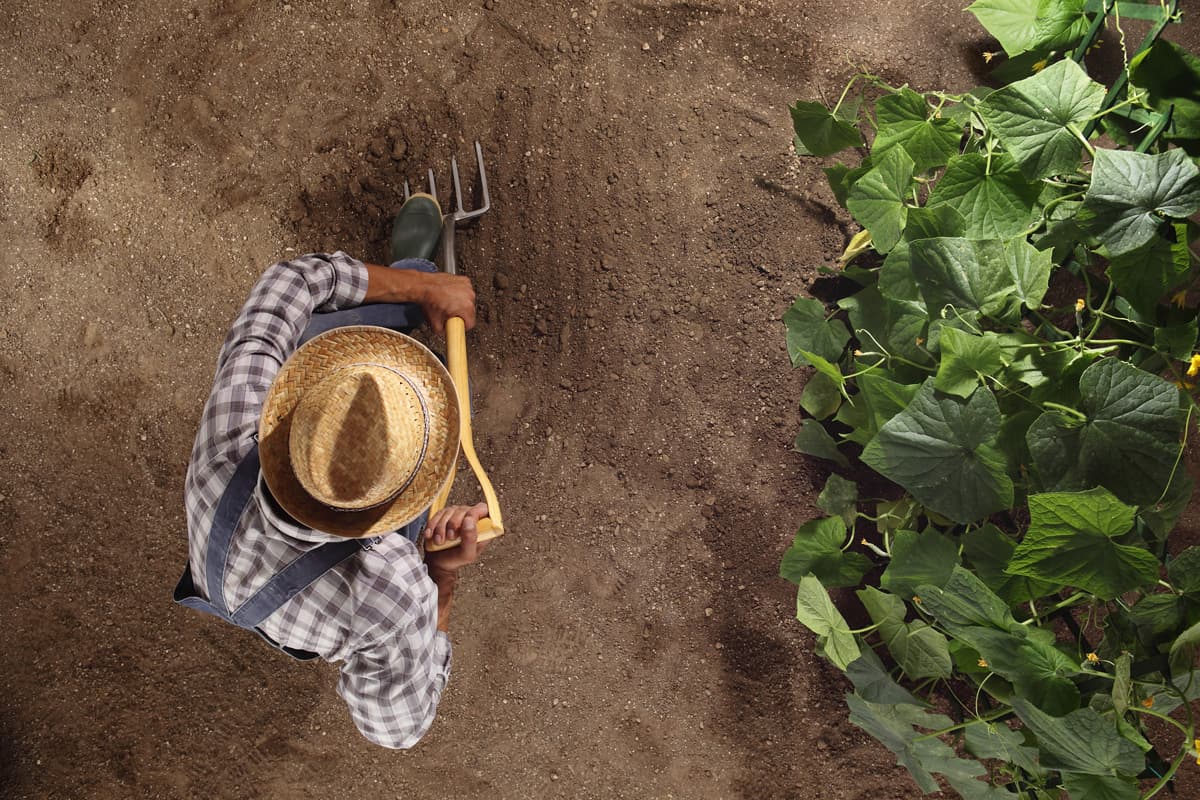
There is no clear difference between a spading fork and a digging fork. Both refer to the same type of garden fork used to move, till, or aerate the soil in the garden.
In this article, we discussed the difference between the two terms. We also discussed using a garden fork and if there is a difference between a garden fork and a digging fork. Make sure to use the correct garden fork that will best suit your gardening needs.
Made it to the end? Check out some of our related posts!


